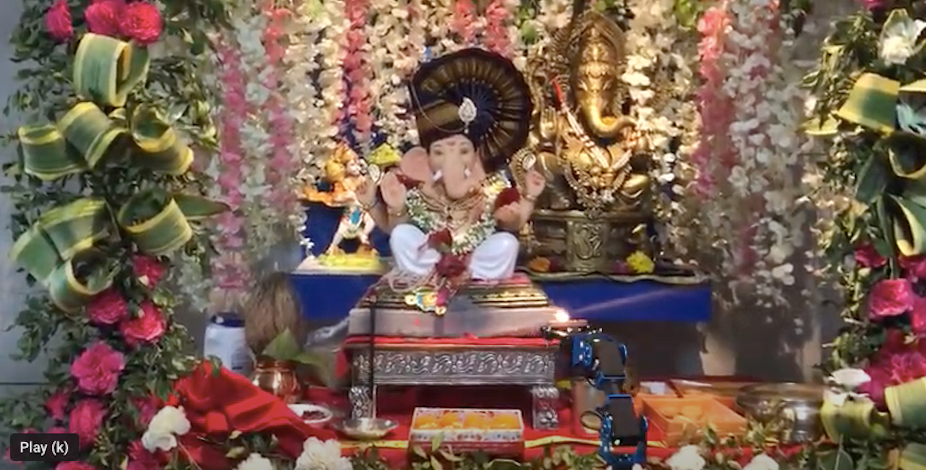by HOLLY WALTERS

It isn’t just artists and teachers who are losing sleep over advances in automation and artificial intelligence. Robots are being brought into Hinduism’s holiest rituals – and not all worshippers are happy about it.
In 2017, a technology firm in India introduced a robotic arm to perform “aarti,” a ritual in which a devotee offers an oil lamp to the deity to symbolize the removal of darkness. This particular robot was unveiled at the Ganpati festival, a yearly gathering of millions of people in which an icon of Ganesha, the elephant-headed god, is taken out in a procession and immersed in the Mula-Mutha river in Pune in central India.
Ever since, that robotic aarti arm has inspired several prototypes, a few of which continue to regularly perform the ritual across India today, along with a variety of other religious robots throughout East Asia and South Asia. Robotic rituals even now include an animatronic temple elephant in Kerala on India’s southern coast.
Yet this kind of religious robotic usage has led to increasing debates about the use of AI and robotic technology in devotion and worship. Some devotees and priests feel that this represents a new horizon in human innovation that will lead to the betterment of society, while others worry that using robots to replace practitioners is a bad omen for the future.
The Conversation for more
